 It has been quite a long time since these shape-shifting drone stalwarts from Kranky's golden age last surfaced with a major release, aside from the gnarled, bass-heavy Disorder LP that teasingly appeared on Important back in 2017. While I am certainly happy to have them back, this latest release from the core duo of Joe Denardo and Kevin Doria takes a somewhat unexpectedly minimalist and meditative direction. I am tempted to call Diptych a "return to form," but Growing have several different appealing forms they could potentially return to and this one arguably feels like a mis-remembered return to the pair's Kranky era, as these radiant slow-motion reveries pieces feel more akin to Stars of the Lid than any Growing album I recall. Whether that is a step in the right direction or not is hard to say, as a strong case could be made that project's killer run of weirder, spacier releases in 2007 & 2008 was its zenith and that this latest opus sands away all of the duo's distinctive quirks and sharp edges. From a purely artistic perspective, however, Diptych is quite an impressive achievement, as Doria and Denardo distill drone to its purest essence with an almost supernatural degree of control and patience.
It has been quite a long time since these shape-shifting drone stalwarts from Kranky's golden age last surfaced with a major release, aside from the gnarled, bass-heavy Disorder LP that teasingly appeared on Important back in 2017. While I am certainly happy to have them back, this latest release from the core duo of Joe Denardo and Kevin Doria takes a somewhat unexpectedly minimalist and meditative direction. I am tempted to call Diptych a "return to form," but Growing have several different appealing forms they could potentially return to and this one arguably feels like a mis-remembered return to the pair's Kranky era, as these radiant slow-motion reveries pieces feel more akin to Stars of the Lid than any Growing album I recall. Whether that is a step in the right direction or not is hard to say, as a strong case could be made that project's killer run of weirder, spacier releases in 2007 & 2008 was its zenith and that this latest opus sands away all of the duo's distinctive quirks and sharp edges. From a purely artistic perspective, however, Diptych is quite an impressive achievement, as Doria and Denardo distill drone to its purest essence with an almost supernatural degree of control and patience.
This album initially seemed very straightforward to me, but sneakily became more and more interesting with repeat listens and a bit of idle reflection upon its mysteries. One such mystery is Growing's decision to call a three-song album Diptych, which caused me to wonder if the two things being referenced were Doria and Denardo or the sun and moon from the album's eclipse cover art. Then I realized that the eclipse provided a flawed but insightful Rosetta Stone for grasping the essence of this latest direction, as each piece feels like slow-motion footage of a mesmerizing celestial event: seemingly nothing happens for a long time, then something subtly rapturous begins to reveal itself. The flaw with eclipse imagery is merely that nothing here undergoes a particularly dramatic transformation nor is there much perceptible darkness to speak of (though a dissonant undercurrent does briefly appear in the closing "Swallow Turn"). Instead, these pieces feel more like solar flares blossoming from the surface of the sun in extremely glacial fashion. Of the three pieces, "Swallow Turn" is my favorite, as it is the most condensed and varied: it is half the length of the others, yet still feels epic and it even includes some bird songs and spacey synth-sounding flourishes near the end. The other two pieces offer their own compelling twists though: "Variable Speeds" culminates with an unexpected heavy and pulsing bass buzz, while "Down + Distance" initially sounds like a shimmering organ drone but dissolves into a vapor trail of low-end thrum and smears of sculpted feedback. Aside from that, it is also very cool that these sounds mostly emanate from just a bass and a guitar and that Doria and Denardo have seemingly achieved total ego death (or at least become obsessive Eliane Radigue fans). Diptych may be an album that requires significant patience and attention to fall in love with, but it is ultimately one worth loving.
Samples can be found here.


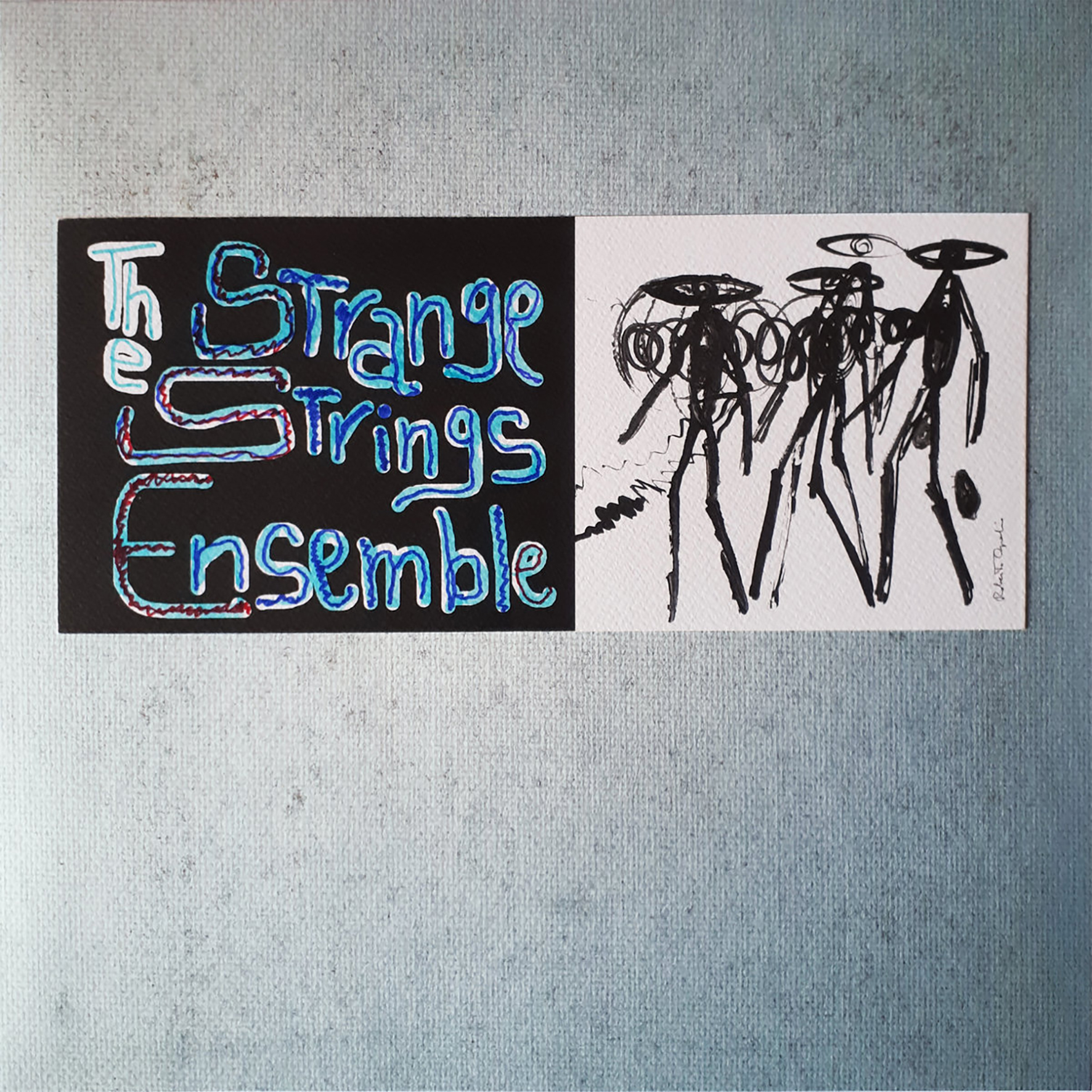 It fair to say that any album involving the Opalio brothers is destined to be memorably bizarre, but this Sun Ra-inspired EP takes My Cat is an Alien's vision even further out into fringes of outsider psychedelia than usual. For one, it is almost entirely acoustic, so there are no alientronics or psychotropic drones to be found and Roberto's queasily floating vocals seem (mostly) absent as well. Obviously, that eliminates nearly everything "familiar" about MCIAA's vision, so it makes a lot of sense to give this project a fresh name. In lieu of the expected alien terrain, the ensemble (rounded out by writer Philippe Robert & Joëlle Vinciarelli) "spontaneously composed" a visceral, churning, and jagged eruption using the "ancient, mostly ethnic, acoustic string instruments from Vinciarelli's vast collection." In keeping with the Sun Ra theme, the instruments were purposely untuned in homage to the late jazz icon's 1967 Strange Strings album, which Ra dubbed "a study in ignorance" (the Arkestra were given an eclectic array of oft-foreign string instruments that they did not know how to play). Unsurprisingly, critic Sean Westergaard's assessment of that polarizing Sun Ra opus is even more true of its spiritual heir: "If you don't like 'out,' stay clear of this one." I, however, am quite fond of "out," so I very much enjoyed this brief, singular, and synapse-frying detour.
It fair to say that any album involving the Opalio brothers is destined to be memorably bizarre, but this Sun Ra-inspired EP takes My Cat is an Alien's vision even further out into fringes of outsider psychedelia than usual. For one, it is almost entirely acoustic, so there are no alientronics or psychotropic drones to be found and Roberto's queasily floating vocals seem (mostly) absent as well. Obviously, that eliminates nearly everything "familiar" about MCIAA's vision, so it makes a lot of sense to give this project a fresh name. In lieu of the expected alien terrain, the ensemble (rounded out by writer Philippe Robert & Joëlle Vinciarelli) "spontaneously composed" a visceral, churning, and jagged eruption using the "ancient, mostly ethnic, acoustic string instruments from Vinciarelli's vast collection." In keeping with the Sun Ra theme, the instruments were purposely untuned in homage to the late jazz icon's 1967 Strange Strings album, which Ra dubbed "a study in ignorance" (the Arkestra were given an eclectic array of oft-foreign string instruments that they did not know how to play). Unsurprisingly, critic Sean Westergaard's assessment of that polarizing Sun Ra opus is even more true of its spiritual heir: "If you don't like 'out,' stay clear of this one." I, however, am quite fond of "out," so I very much enjoyed this brief, singular, and synapse-frying detour.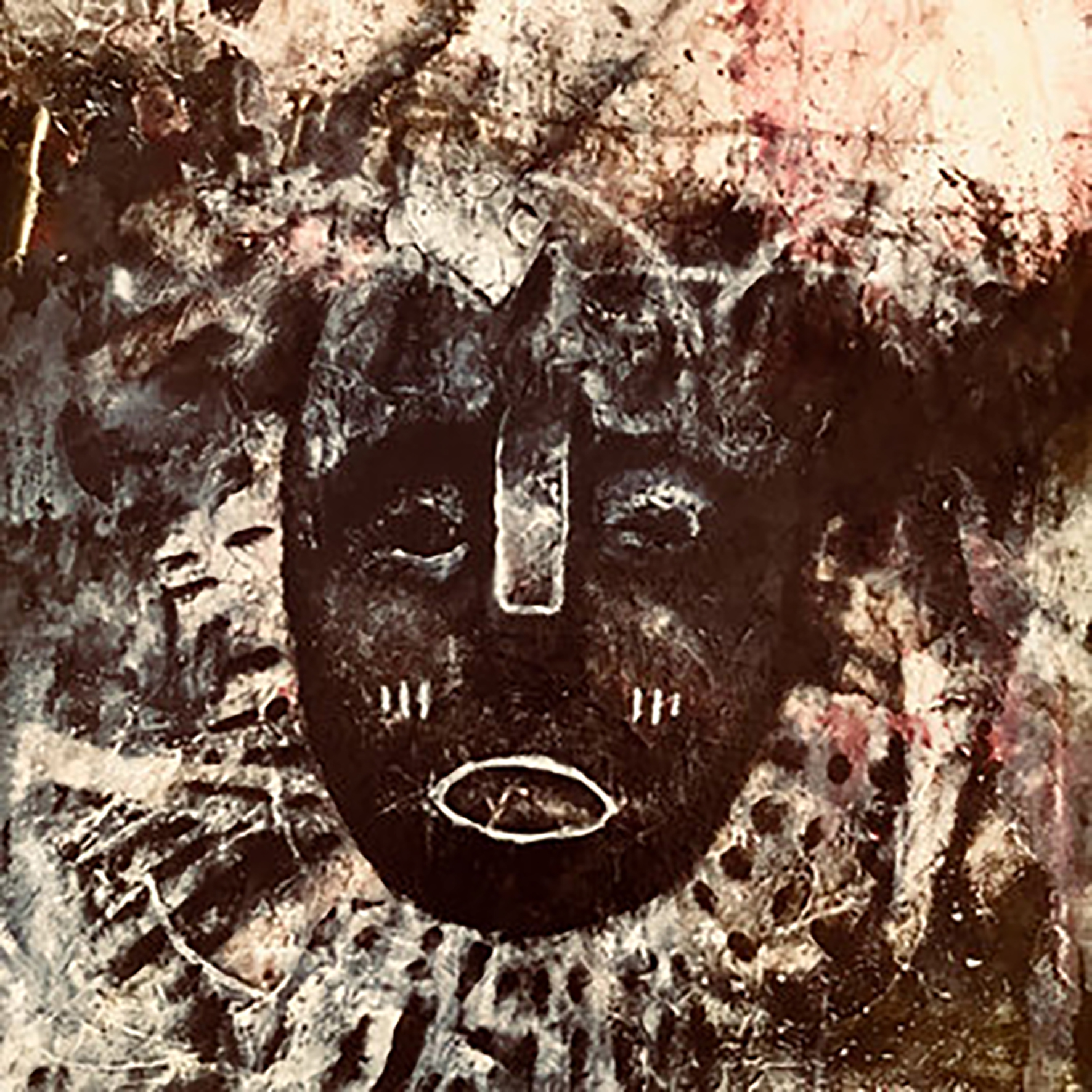
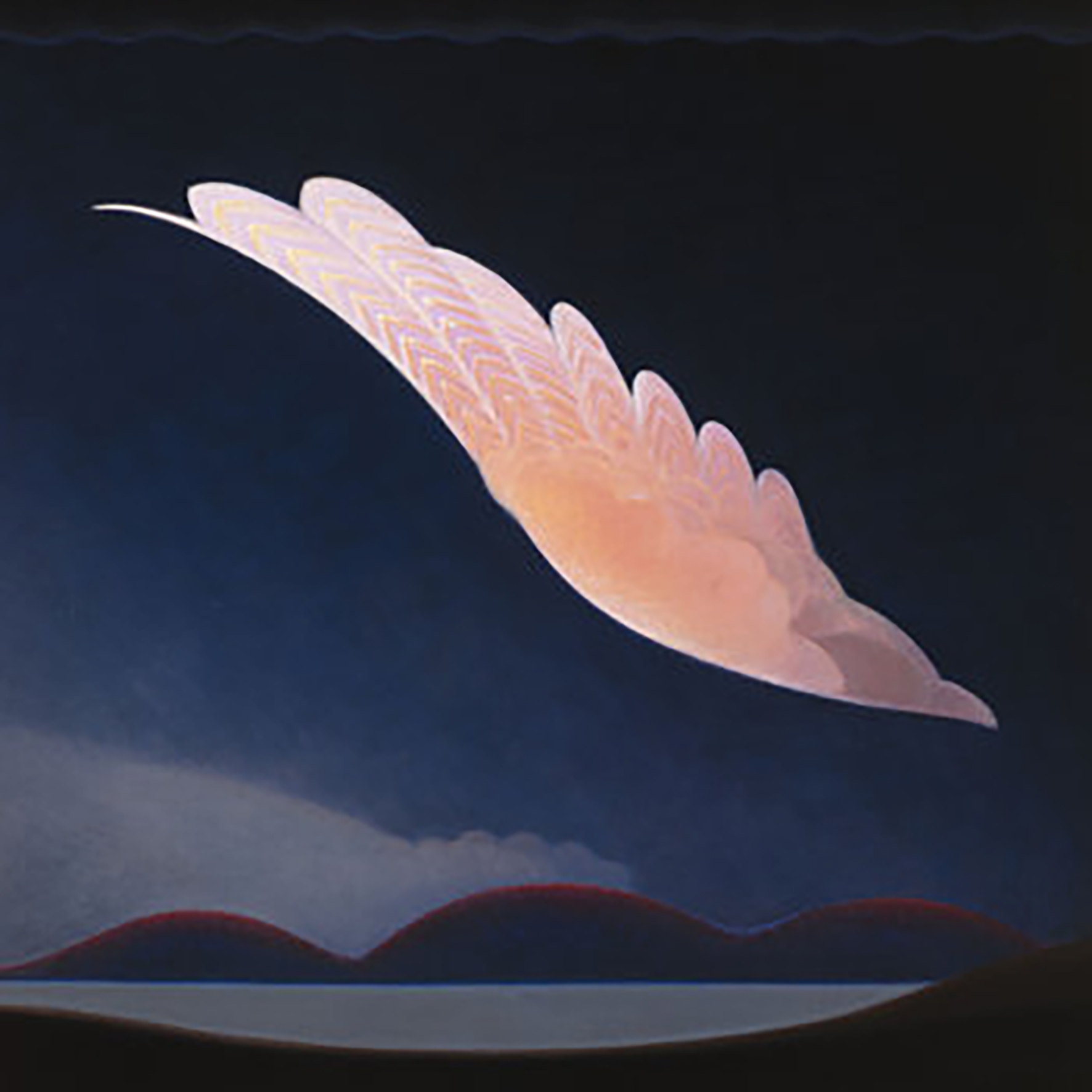
 Part of Ulrich Schnauss's musical history is building layers of beautiful electronic imagery, both within his solo work and partnering with others. Schnauss is paired up once again with Danish recording and mastering engineer Jonas Munk, member of space rockers Causa Sui and half of the ambient chill-out duo Billow Observatory. These two equally talented creators produce a lush mélange of extraordinarily hypnotic dreamscapes on Eight Fragments Of An Illusion. Rich kosmische textures, vibrant guitar, and concentrated layers of electronic atmosphere make for an engaging ride, especially when experienced on headphones.
Part of Ulrich Schnauss's musical history is building layers of beautiful electronic imagery, both within his solo work and partnering with others. Schnauss is paired up once again with Danish recording and mastering engineer Jonas Munk, member of space rockers Causa Sui and half of the ambient chill-out duo Billow Observatory. These two equally talented creators produce a lush mélange of extraordinarily hypnotic dreamscapes on Eight Fragments Of An Illusion. Rich kosmische textures, vibrant guitar, and concentrated layers of electronic atmosphere make for an engaging ride, especially when experienced on headphones.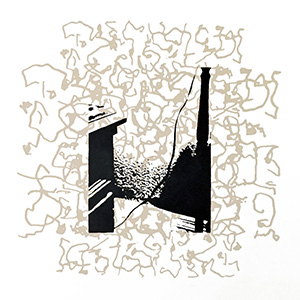 Founded as a band in Omaha, Nebraska in 1998, Naturaliste's first release in over 15 years is certainly a drastic departure from the local, improvised shows the group was responsible for. Rather than those frequent, though often dubiously captured recordings, Temporary Presence is not only a highly quality document of fully realized artistry, but also a document of where the band is so many years later.
Founded as a band in Omaha, Nebraska in 1998, Naturaliste's first release in over 15 years is certainly a drastic departure from the local, improvised shows the group was responsible for. Rather than those frequent, though often dubiously captured recordings, Temporary Presence is not only a highly quality document of fully realized artistry, but also a document of where the band is so many years later.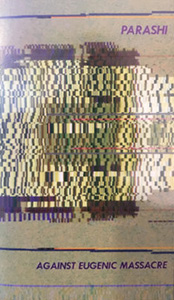 Mike Griffin, as Parashi, is one of the most prolific noise artists in the upstate New York region, both on his own and in collaborations with others, such as John Olson (as Spykes) and Noise Nomads. Against Eugenic Massacre features him doing what he does best: a murky combination of psychedelic electronics, incidental rhythms, and mysterious ambiences that perfectly balances between harsh experimentation and complex environments.
Mike Griffin, as Parashi, is one of the most prolific noise artists in the upstate New York region, both on his own and in collaborations with others, such as John Olson (as Spykes) and Noise Nomads. Against Eugenic Massacre features him doing what he does best: a murky combination of psychedelic electronics, incidental rhythms, and mysterious ambiences that perfectly balances between harsh experimentation and complex environments.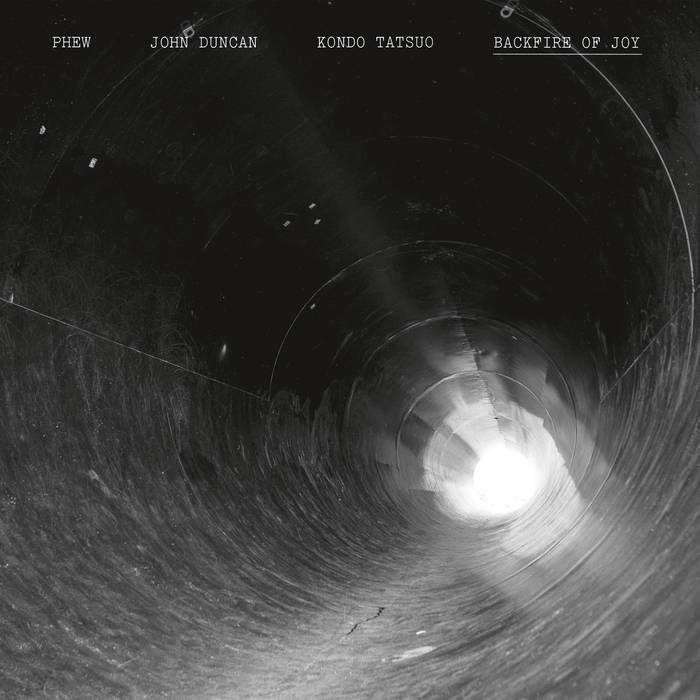 This short release captures the only performance from the trio. Recorded at Hosei University, Tokyo, on John Duncan’s first visit to Japan in 1982, it is a fascinating document both in the context of that visit but also in terms of the creativity, emotion, technique, and improvisation. The participants are meeting here for the first time, although they were familiar with each other’s work through tape exchange. Duncan is finding and processing shortwave radio signals, Tatsuo using piano, tape loops, and synth textures, and Phew vocalizing in English and Japanese. 
This short release captures the only performance from the trio. Recorded at Hosei University, Tokyo, on John Duncan’s first visit to Japan in 1982, it is a fascinating document both in the context of that visit but also in terms of the creativity, emotion, technique, and improvisation. The participants are meeting here for the first time, although they were familiar with each other’s work through tape exchange. Duncan is finding and processing shortwave radio signals, Tatsuo using piano, tape loops, and synth textures, and Phew vocalizing in English and Japanese. 
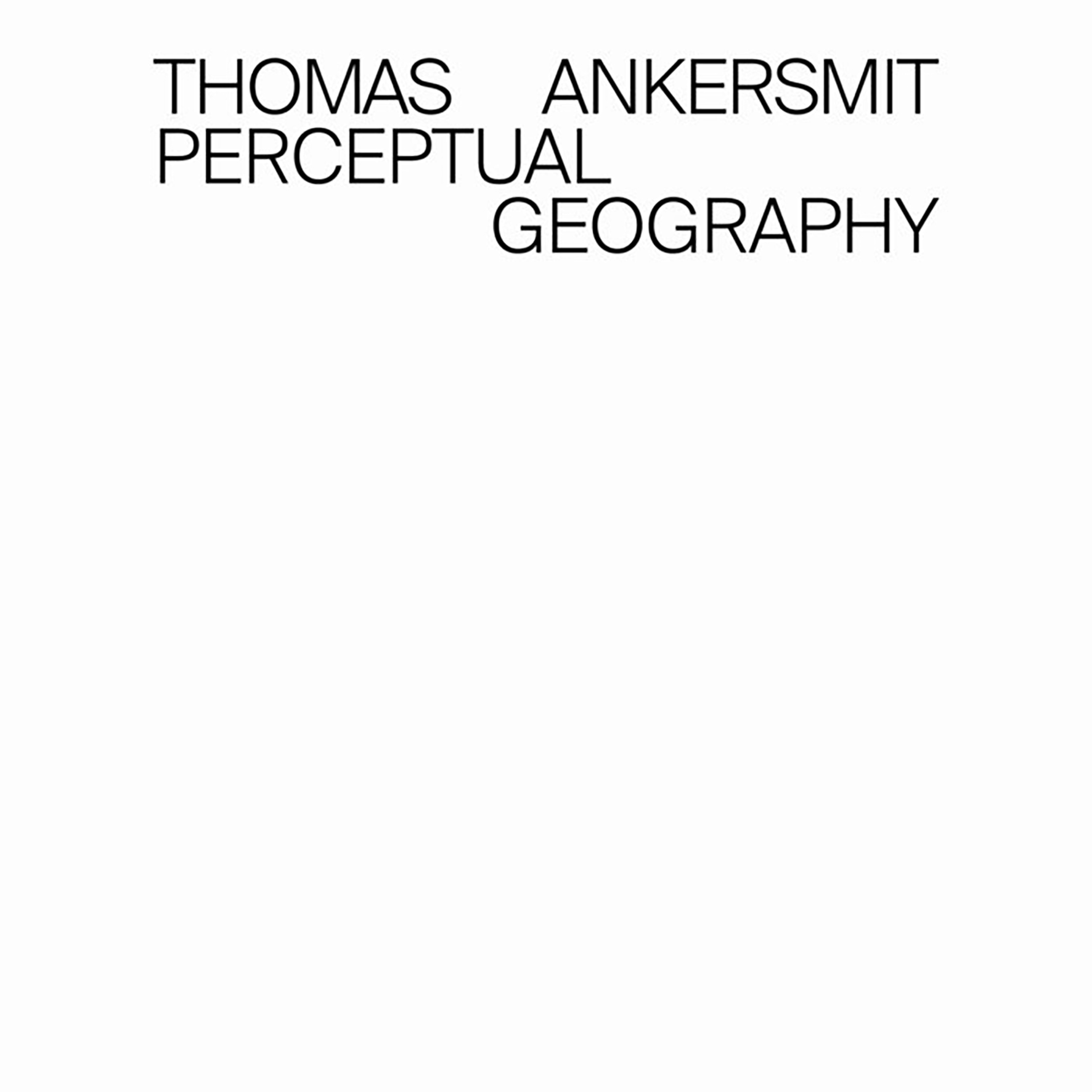 Three years after the mesmerizing Homage to Dick Raaijmakers, Thomas Ankersmit is back with yet another bombshell inspired by an underappreciated electronic music visionary. In this case, that visionary is Maryanne Amacher, who also happens to be the person who fatefully introduced Ankersmit to his Serge modular synth. Naturally, the Serge retains its central role from the Raaijmakers album and Ankersmit masterfully wields it again to conjure up another hallucinatory swirl of phantom sounds and strange aural phenomena. The conceptual themes are bit different this time around, however, as Ankersmit explores the ideas laid out in Amacher's "Psychoacoustic Phenomena in Musical Composition: Some Features of a Perceptual Geography" essay. Unsurprisingly, Ankersmit does a stellar job psychoacoustically mapping out his own compelling perceptual geography with this release, but his most striking bit of sorcery actually occurs off the album, as the piece was engineered to trigger otoacoustic emissions, which are "sounds emanating from inside the head, generated by the ears themselves."
Three years after the mesmerizing Homage to Dick Raaijmakers, Thomas Ankersmit is back with yet another bombshell inspired by an underappreciated electronic music visionary. In this case, that visionary is Maryanne Amacher, who also happens to be the person who fatefully introduced Ankersmit to his Serge modular synth. Naturally, the Serge retains its central role from the Raaijmakers album and Ankersmit masterfully wields it again to conjure up another hallucinatory swirl of phantom sounds and strange aural phenomena. The conceptual themes are bit different this time around, however, as Ankersmit explores the ideas laid out in Amacher's "Psychoacoustic Phenomena in Musical Composition: Some Features of a Perceptual Geography" essay. Unsurprisingly, Ankersmit does a stellar job psychoacoustically mapping out his own compelling perceptual geography with this release, but his most striking bit of sorcery actually occurs off the album, as the piece was engineered to trigger otoacoustic emissions, which are "sounds emanating from inside the head, generated by the ears themselves."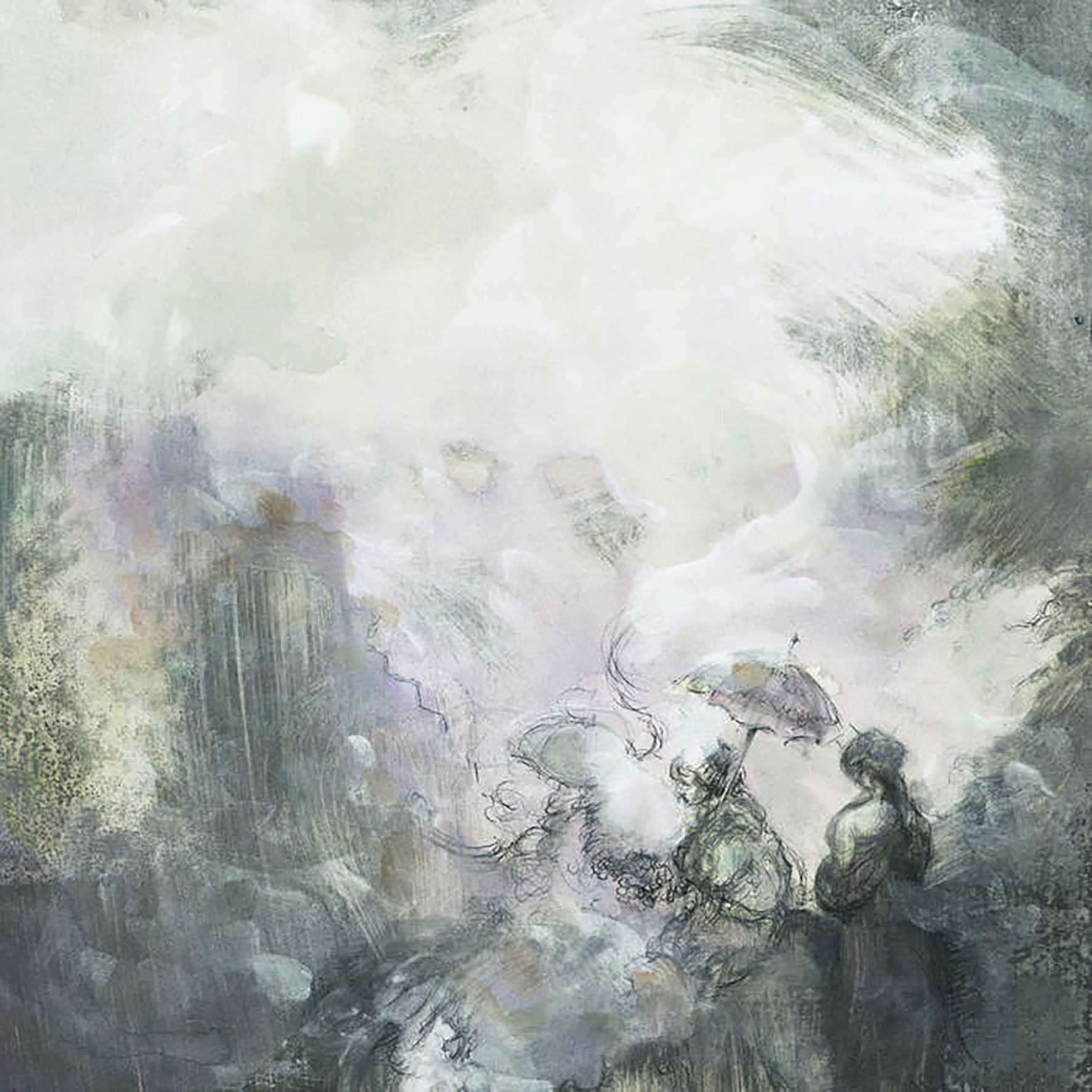 Newly reissued on vinyl (and digitally) with beautiful new artwork, Paradise Lost was originally released as a cassette back in 2019. As is the norm for many Chalk releases, additional details beyond the fact that it exists are quite thin, but this one takes that to an amusing extreme, as the Discogs entry for the original cassette notes "label and artist name are not listed on the release." That said, I believe I can say with moderate certainty that these two longform pieces were recorded on an 8-track reel-to-reel between 2016 and 2018 and that Chalk primarily played a synthesizer. Also, his Ghosts on Water bandmate Naoko Suzuki contributed some very well-hidden vocals and created the artwork for the original tape. To some degree, it makes sense that this album originally surfaced as a very limited-small run tape, as it does not feel like one of Chalk's more significant opuses, but it is quite an enjoyable and interesting release nonetheless. In fact, the title piece feels like legitimately prime Andrew Chalk material to me, though I suspect many longtime fans will be more fascinated by the surprising and divergent "This Pendent World."
Newly reissued on vinyl (and digitally) with beautiful new artwork, Paradise Lost was originally released as a cassette back in 2019. As is the norm for many Chalk releases, additional details beyond the fact that it exists are quite thin, but this one takes that to an amusing extreme, as the Discogs entry for the original cassette notes "label and artist name are not listed on the release." That said, I believe I can say with moderate certainty that these two longform pieces were recorded on an 8-track reel-to-reel between 2016 and 2018 and that Chalk primarily played a synthesizer. Also, his Ghosts on Water bandmate Naoko Suzuki contributed some very well-hidden vocals and created the artwork for the original tape. To some degree, it makes sense that this album originally surfaced as a very limited-small run tape, as it does not feel like one of Chalk's more significant opuses, but it is quite an enjoyable and interesting release nonetheless. In fact, the title piece feels like legitimately prime Andrew Chalk material to me, though I suspect many longtime fans will be more fascinated by the surprising and divergent "This Pendent World."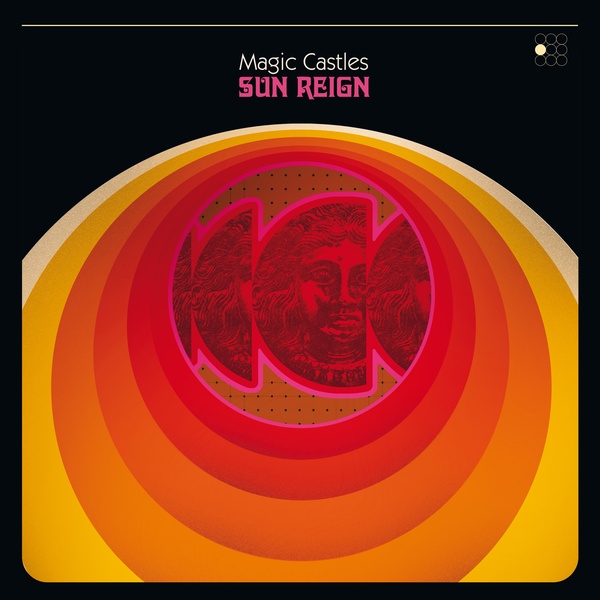 Minneapolis-based Magic Castles make a glorious return with their fourth release on Anton Newcombe's label, weaving together jangly hooks and minor chords and slathering it with fuzz. The release is triumphant in that it was released at all, following the band's 2016 hiatus and songwriter Jason Edmonds' near-fatal car accident in 2019, not to mention contending with a pandemic. Sun Reign is a lush and dreamy masterpiece of layered musical intensities, awash in evocative imagery and heartful melodies.
Minneapolis-based Magic Castles make a glorious return with their fourth release on Anton Newcombe's label, weaving together jangly hooks and minor chords and slathering it with fuzz. The release is triumphant in that it was released at all, following the band's 2016 hiatus and songwriter Jason Edmonds' near-fatal car accident in 2019, not to mention contending with a pandemic. Sun Reign is a lush and dreamy masterpiece of layered musical intensities, awash in evocative imagery and heartful melodies.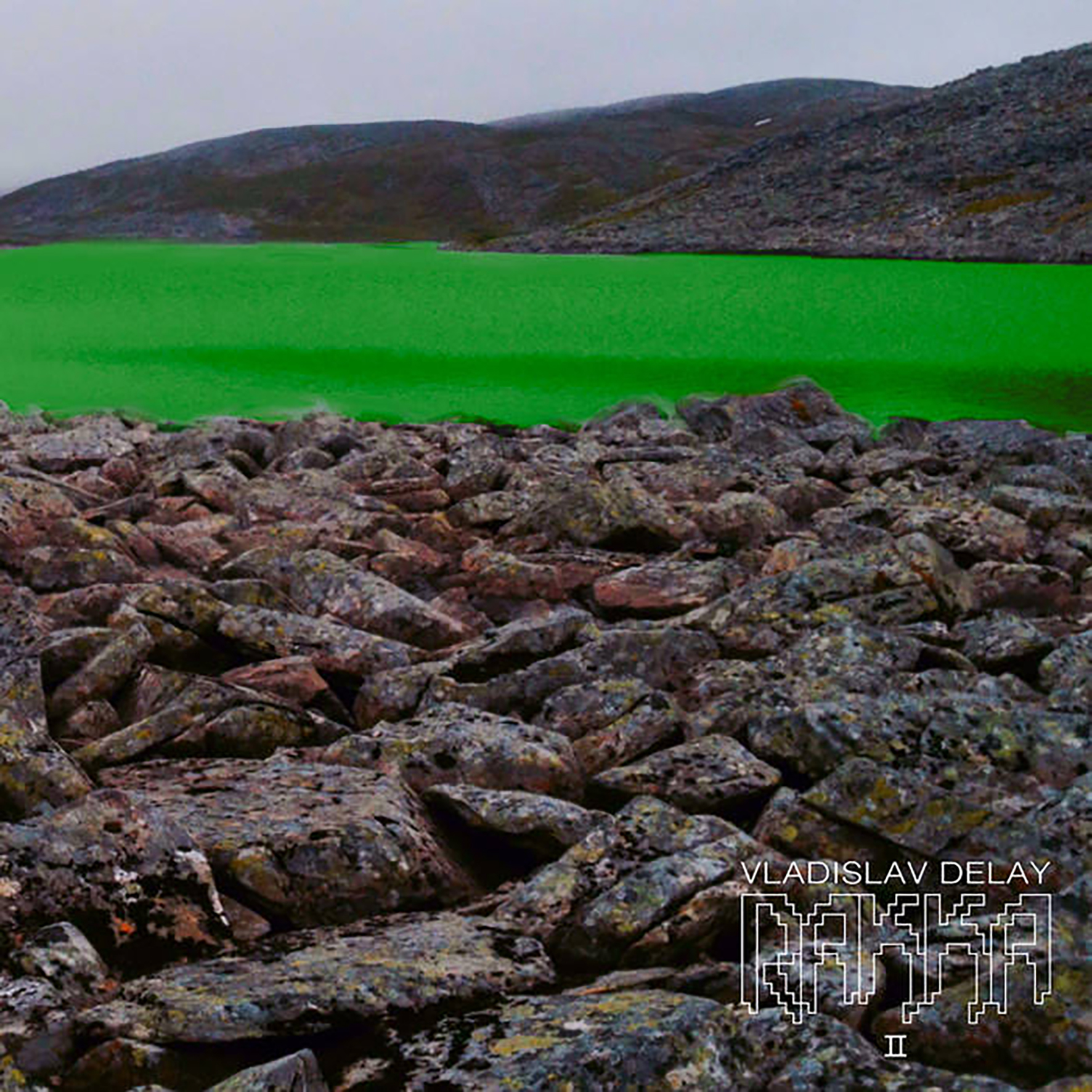
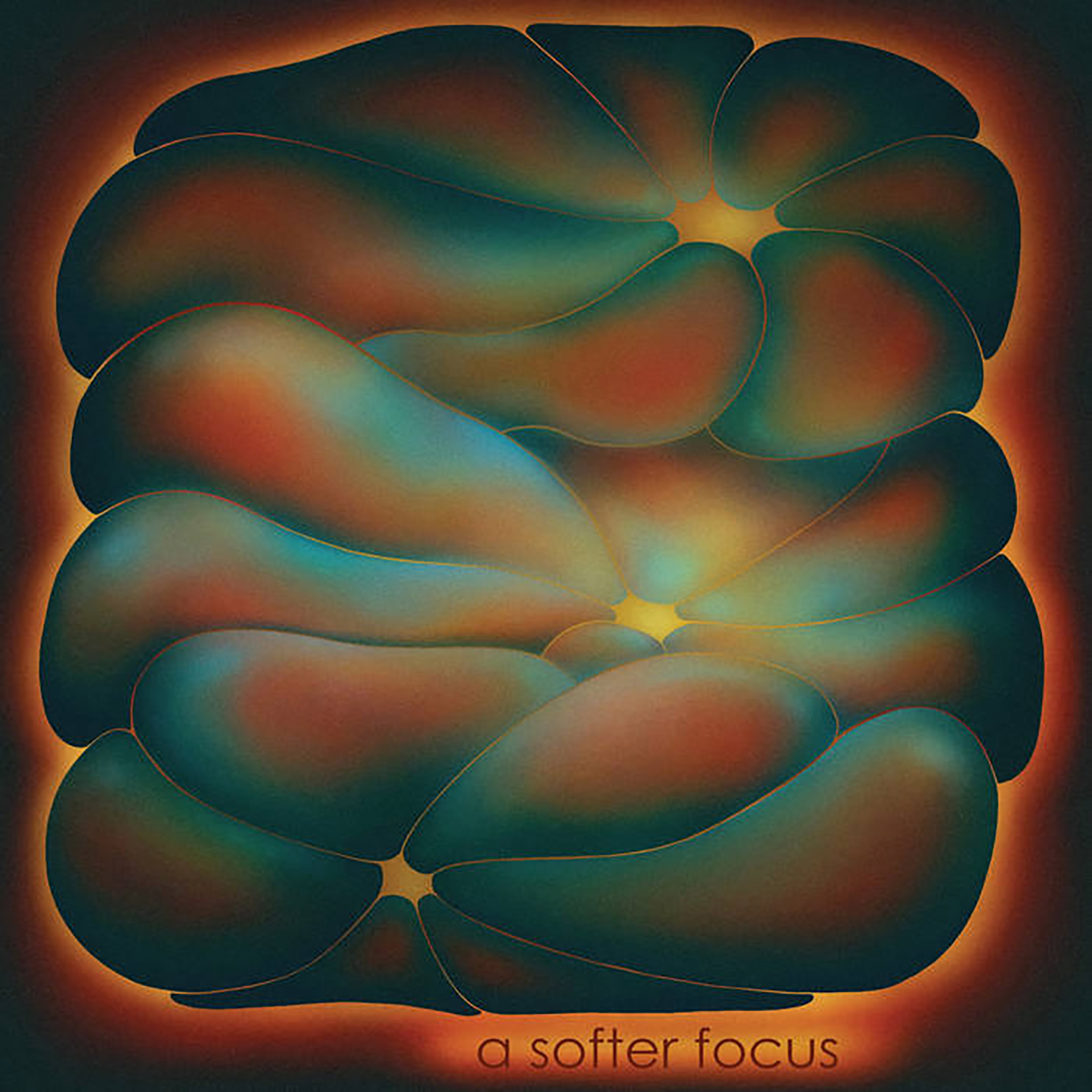
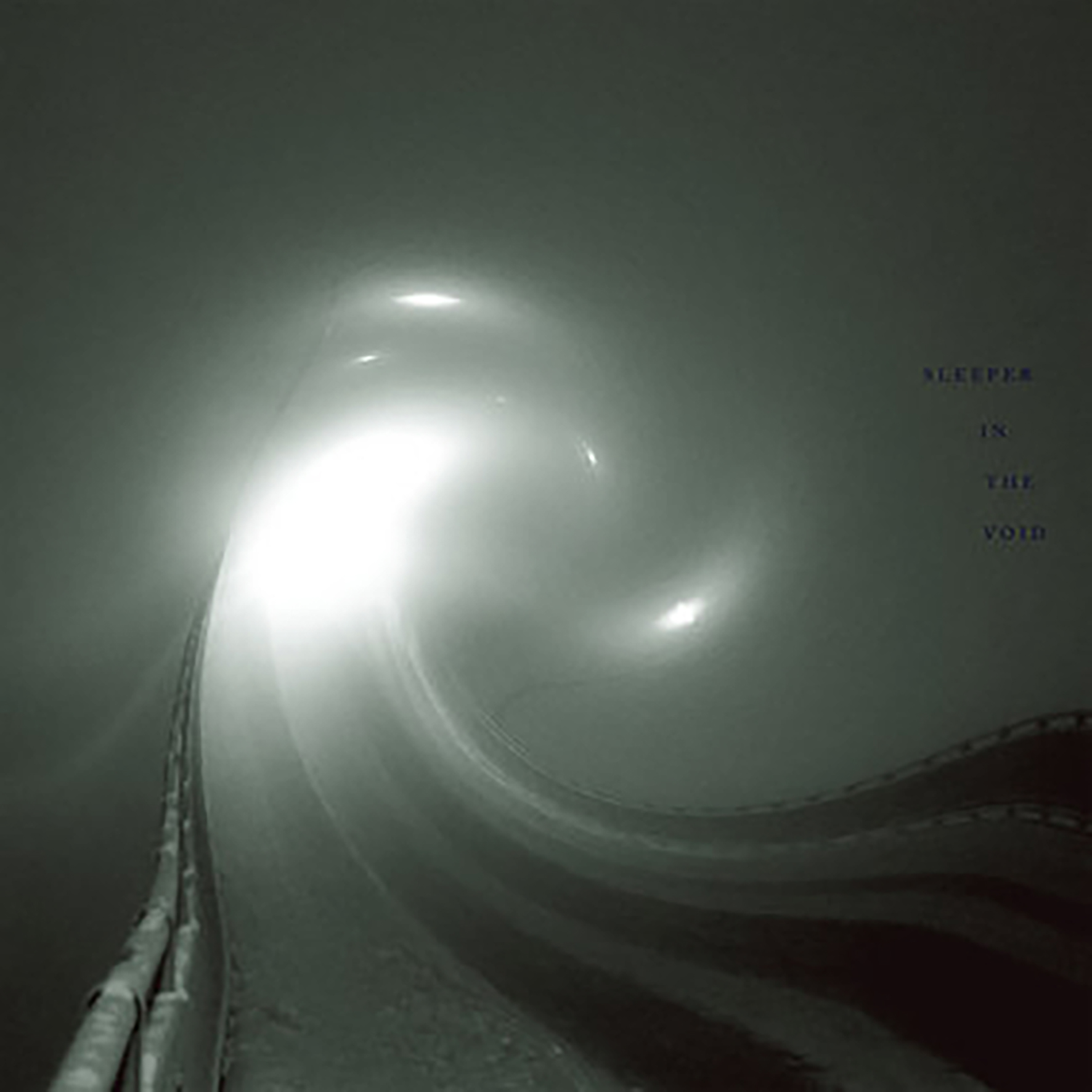
 Forthcoming.
Forthcoming. Important Records' Cassauna imprint has quietly released some woefully underappreciated stunners over the years and the latest one to blindside me is this brief yet near-perfect tape from The Spring Press's Jeff Burch, whose work seems to steadily grow more compelling each time he surfaces. While last year's collaboration with Tres Warren explored similarly heady and timeless "deep psych" territory, Samum Suite takes a very different route to get there, as it was composed and recorded primarily with acoustic instruments at the edge of the Sahara Desert. I am always delighted when acoustic drones, Eastern modalities, and field recordings collide in a pleasing way, but this album feels like it was recorded in an entirely different timeline in which The Theatre of Eternal Music relocated to Morocco and got assimilated into The Master Musicians of Jajouka. Sadly, that is not the timeline I wound up living in, but Samum Suite legitimately feels like the kind of album no one makes anymore. Or maybe ever made. While plenty of artists have borrowed liberally from traditional Middle Eastern sounds in service of their own vision, Burch seems to have achieved full ego death and dissolved into the streets of Morocco only to re-emerge with a beautifully crafted collage that replays his experiences as a hypnotic swirl of sensory impressions.
Important Records' Cassauna imprint has quietly released some woefully underappreciated stunners over the years and the latest one to blindside me is this brief yet near-perfect tape from The Spring Press's Jeff Burch, whose work seems to steadily grow more compelling each time he surfaces. While last year's collaboration with Tres Warren explored similarly heady and timeless "deep psych" territory, Samum Suite takes a very different route to get there, as it was composed and recorded primarily with acoustic instruments at the edge of the Sahara Desert. I am always delighted when acoustic drones, Eastern modalities, and field recordings collide in a pleasing way, but this album feels like it was recorded in an entirely different timeline in which The Theatre of Eternal Music relocated to Morocco and got assimilated into The Master Musicians of Jajouka. Sadly, that is not the timeline I wound up living in, but Samum Suite legitimately feels like the kind of album no one makes anymore. Or maybe ever made. While plenty of artists have borrowed liberally from traditional Middle Eastern sounds in service of their own vision, Burch seems to have achieved full ego death and dissolved into the streets of Morocco only to re-emerge with a beautifully crafted collage that replays his experiences as a hypnotic swirl of sensory impressions. In 2017, C-Schulz’s late '80s-early '90s work was compiled in this mesmerizing album. Barely in his twenties, Schulz created some genre-defying music which, although clearly located between the kosmische music of 1970s Germany and early techno-electronica, resists easy classification or dating. The compilation is impossible to become bored with since it is memorable and satisfying yet so unpredictable that it is strangely difficult to recall the atmosphere and pace of individual tracks. This sprawling array of shifting sounds can perhaps be understood as the equivalent of a classic neuroscience memory test where the subject tries to recall 20 unrelated items after they have been covered by a cloth. I remember a Dada collage, industrial rhythms, a tiny piece of acid funk, library musique-concrete, heavy breathing, carbonated liquid cracking ice cubes, galloping static and clattering train tracks, looped chanting, economic radio news chatter, giggling children, a growling beast, a racing heart beat, poignant brass and synth tones.
In 2017, C-Schulz’s late '80s-early '90s work was compiled in this mesmerizing album. Barely in his twenties, Schulz created some genre-defying music which, although clearly located between the kosmische music of 1970s Germany and early techno-electronica, resists easy classification or dating. The compilation is impossible to become bored with since it is memorable and satisfying yet so unpredictable that it is strangely difficult to recall the atmosphere and pace of individual tracks. This sprawling array of shifting sounds can perhaps be understood as the equivalent of a classic neuroscience memory test where the subject tries to recall 20 unrelated items after they have been covered by a cloth. I remember a Dada collage, industrial rhythms, a tiny piece of acid funk, library musique-concrete, heavy breathing, carbonated liquid cracking ice cubes, galloping static and clattering train tracks, looped chanting, economic radio news chatter, giggling children, a growling beast, a racing heart beat, poignant brass and synth tones. 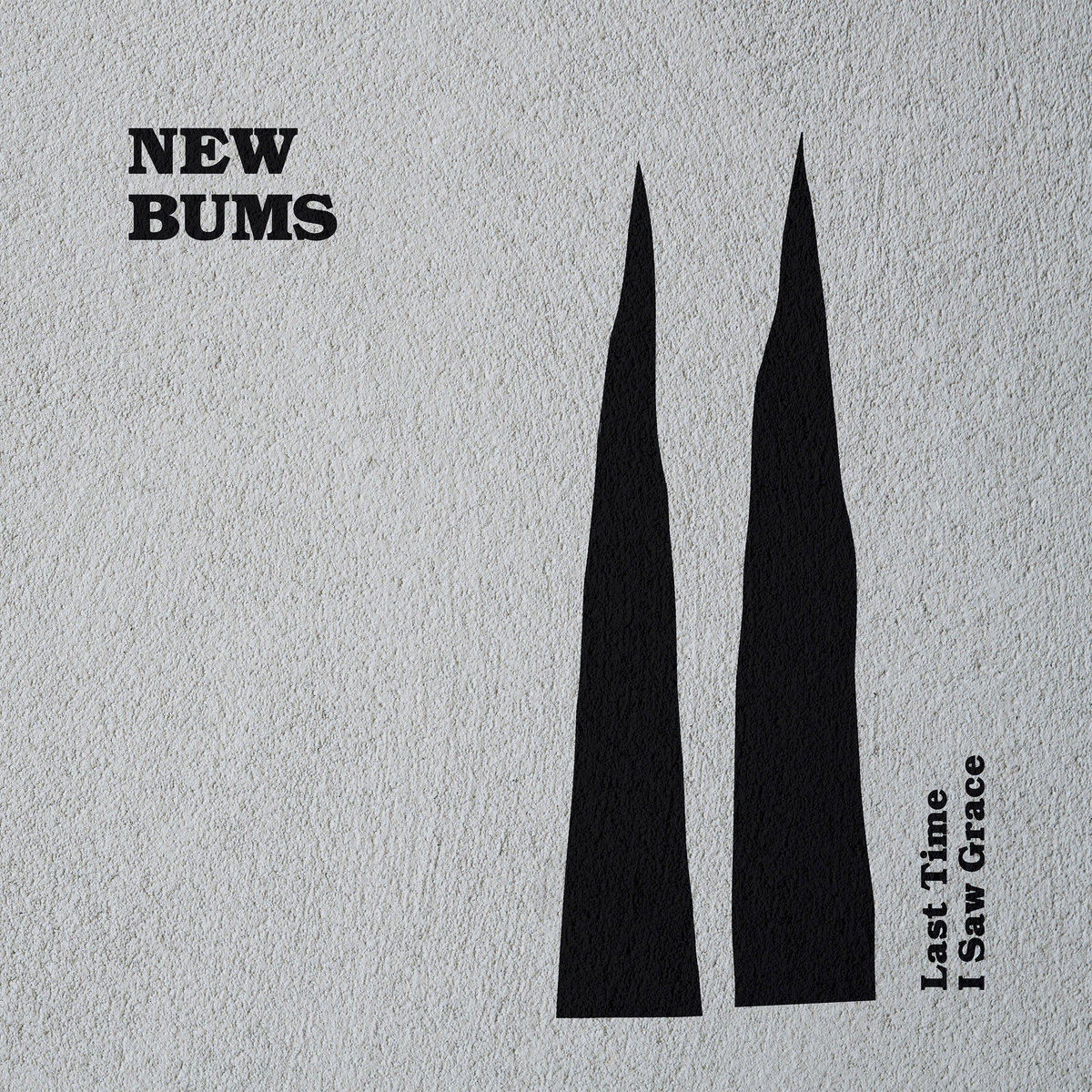
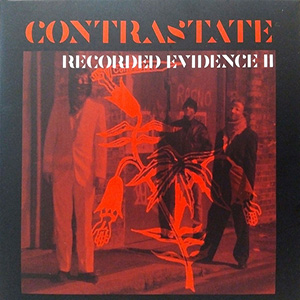 Active for over 30 years, with a 10 year break in the middle, Contrastate’s idiosyncratic take on challenging, industrial tinged music has certainly changed and evolved through the years, as this compilation indicates. What has not changed though, is a dark sarcasm that injects just the right amount of absurdity into their otherwise dour works. Collecting various singles, compilation pieces, and unreleased material onto one CD, it makes for an excellent career overview.
Active for over 30 years, with a 10 year break in the middle, Contrastate’s idiosyncratic take on challenging, industrial tinged music has certainly changed and evolved through the years, as this compilation indicates. What has not changed though, is a dark sarcasm that injects just the right amount of absurdity into their otherwise dour works. Collecting various singles, compilation pieces, and unreleased material onto one CD, it makes for an excellent career overview.
